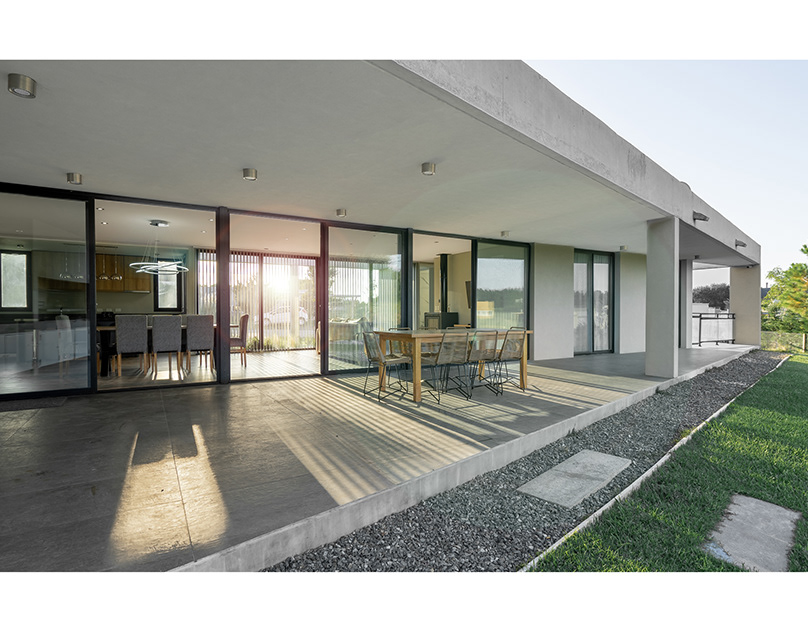
"Io non riesco a guardare a lungo il mare, se no tutto quello che succede a terra non mi interessa più."
Monica Vitti, Il Deserto Rosso (Michelangelo Antonioni, 1964)


01. Ex-Sir, Ravenna
02. Valli, Sant'Alberto, Ravenna



03. Capanno, Marina di Ravenna
04. Valli, Sant'Alberto, Ravenna



05. Canale Candiano, Darsena di Ravenna
06. Antica salina Camillone, Cervia, Ravenna









Sfogliare un libro fotografico è un’esperienza, e come tale, le va concesso il tempo necessario per comprenderla, farla propria e digerirla. Il mio progetto di tesi ha inizio con un’indagine fotografica legata al territorio di Ravenna. Mi sono chiesta: esiste un modo, attraverso la stampa di un’immagine, per offrire al lettore la possibilità di reinterpretare parte della mia esperienza sensibile sul campo?
Ho scelto di usare la serigrafia come tecnologia di riproduzione delle mie fotografie: trattandosi di un metodo artigianale l’immagine di partenza viene scomposta più volte prima di raggiungere il risultato finale, che nasce attraverso un’azione prettamente manuale, trasformando così anche il processo di stampa in un’esperienza autentica. Lo spessore dell’inchiostro è particolarmente visibile e questo aspetto ha portato ad avere un esito positivo sulla resa dei riflessi di luce che caratterizzano gran parte delle mie immagini. Così ho scelto di utilizzare inchiostri particolari che vivessero esclusivamente sul supporto cartaceo e che fossero quasi irriproducibili altrove, colori capaci di creare associazioni visive, effetti di luce, equilibri o contrapposizioni con il supporto cartaceo: il trasparente, il bianco, l’oro e l’argento.
Attraverso le mie stampe ho cercato di restituire alcuni aspetti della realtà che vediamo, per esempio ragionando sul modo in cui la luce riflessa sulle superfici varia continuamente, esattamente come succede sulle mie pagine stampate. L’obiettivo della mia ricerca è stato quindi muovere una riflessione riguardo all’unicità e al valore dell’immagine stampata, invitando il designer alla progettazione di un proprio metodo di stampa alternativo a quello tradizionale a quattro colori, pensato su misura al progetto e capace di trovare nuove soluzioni per far vivere un’immagine.
–
Formato: 32x24cm / Pagine: 132 + 54 stampe
Colore:
Copertina: Stampa digitale con inchiostro trasparente
Interno: CMYK
Fotografie: Stampa in serigrafia artigianale con inchiostro oro, argento, trasparente e bianco
Indice delle carte:
- Fedrigoni Arco Design 120gr/m2
- Fedrigoni Arco Print Avorio 120gr/m2
- Fedrigoni Symbol Freelife Satin 150gr/m2
- Munken Lynx White 120gr/m2
- Carta nera n.d.
ISIA URBINO 2019
Tesi di laurea triennale in Progettazione grafica e Comunicazione visiva
Relatore di tesi: Lorenzo Bravi
-
Leafing through a photographic book is an experience: it must be given the necessary time to understand it, make it your own and digest it. My thesis project began with a photographic investigation related to the Ravenna area. I asked myself: is there a way, through the printing of an image, to offer the reader the possibility of reinterpreting part of my sensitive experience in the field? I chose to use silk-screen printing as the technology to reproduce my photographs: as it is a craft method, the starting image is broken down several times before reaching the final result, which is created through a purely manual action, thus also transforming the printing process into an authentic experience. The thickness of the ink is particularly visible and this has led to a positive outcome on the rendering of the light reflections that characterise most of my images. So I chose to use special inks that would live exclusively on the paper support and were almost irreproducible elsewhere, colours capable of creating visual associations, light effects, balances or contrasts with the paper support: transparent, white, gold and silver.
Through my prints, I have tried to restore certain aspects of the reality we see, for example by reasoning about the way the light reflected on surfaces continuously, as it does on my printed pages. The aim of my research was therefore to reflect on the uniqueness and value of the printed image, inviting the designer to design his own alternative printing method to the traditional CMYK, tailored to the project and capable of finding new solutions to bring an image to life.
-
Format: 32x24cm / Pages: 132 + 54 prints
Colour:
Cover: Digital print with transparent ink
Inside: CMYK
Photographs: Handmade silkscreen print with gold, silver, transparent and white inks
Cover: Digital print with transparent ink
Inside: CMYK
Photographs: Handmade silkscreen print with gold, silver, transparent and white inks
Paper index:
- Fedrigoni Arco Design 120gr/m2
- Fedrigoni Arco Print Ivory 120gr/m2
- Fedrigoni Symbol Freelife Satin 150gr/m2
- Munken Lynx White 120gr/m2
- Black paper n.d.
- Fedrigoni Arco Design 120gr/m2
- Fedrigoni Arco Print Ivory 120gr/m2
- Fedrigoni Symbol Freelife Satin 150gr/m2
- Munken Lynx White 120gr/m2
- Black paper n.d.
ISIA URBINO 2019
BA thesis in Graphic Design and Visual Communication
Supervisor: Lorenzo Bravi
BA thesis in Graphic Design and Visual Communication
Supervisor: Lorenzo Bravi





